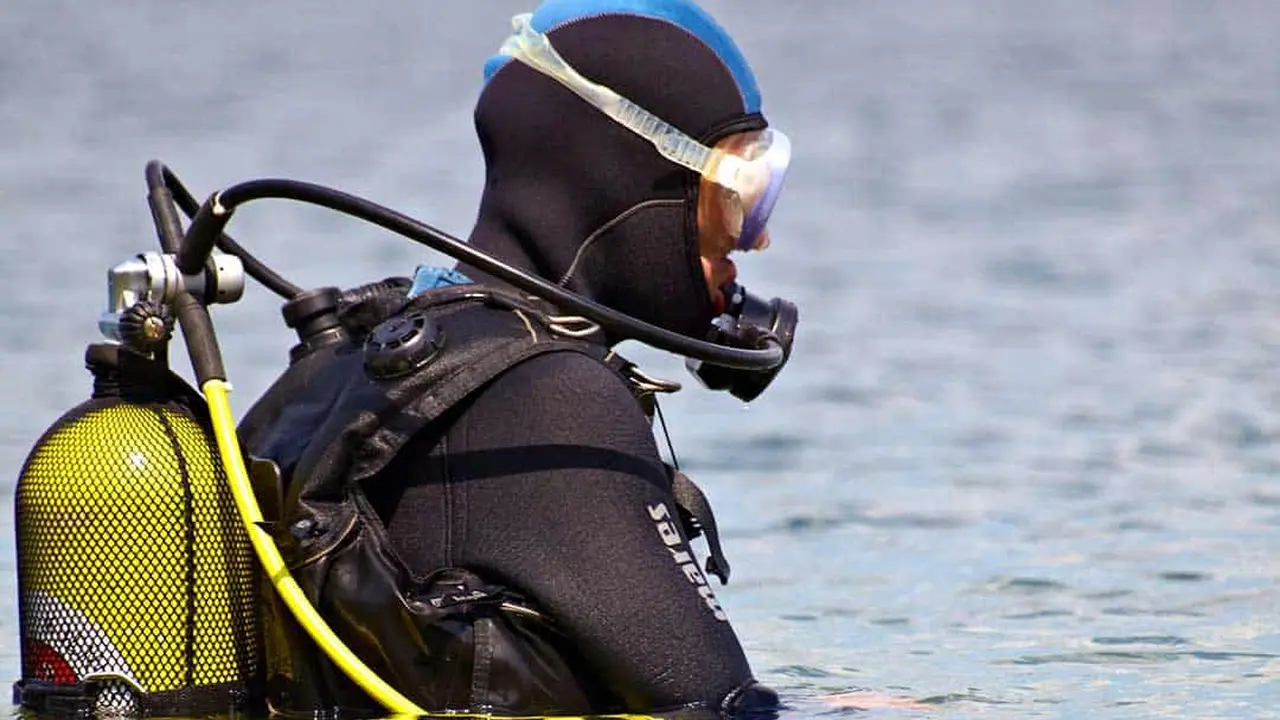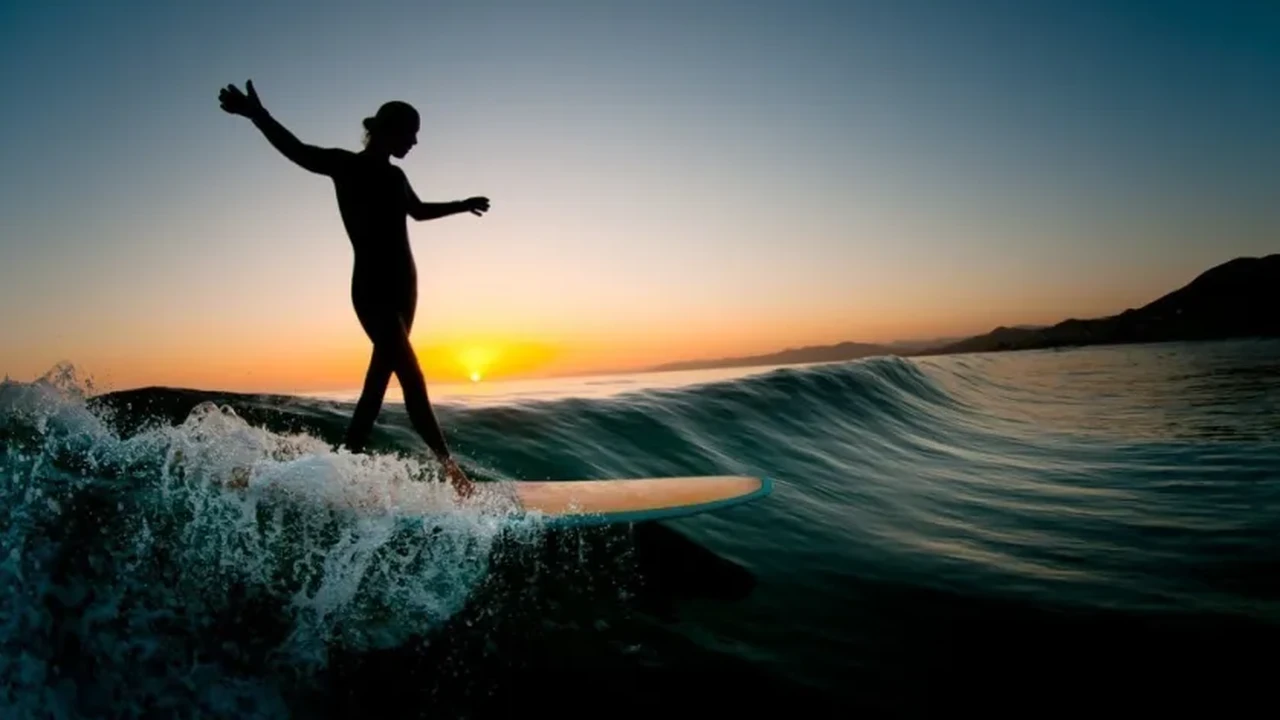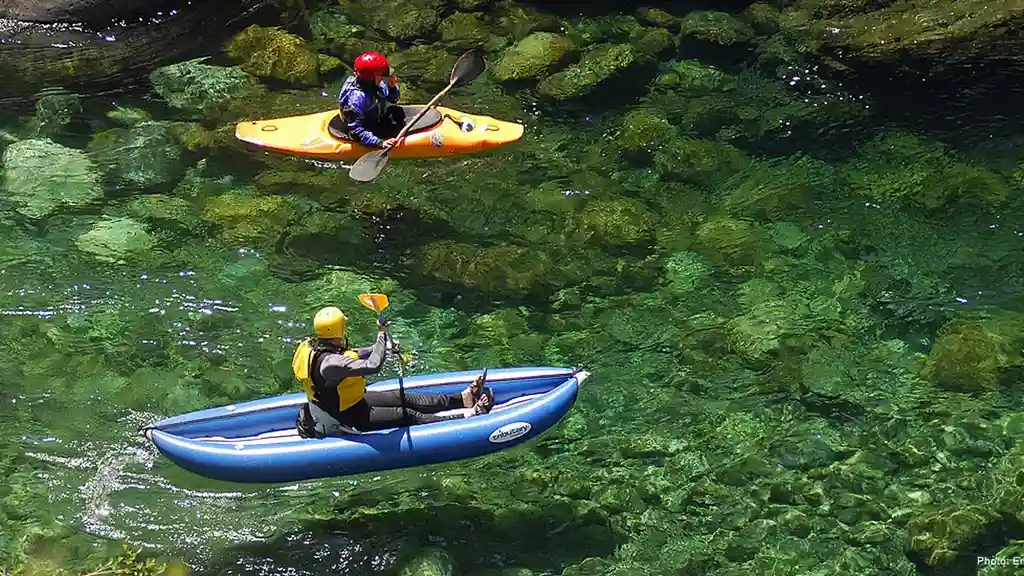Best Scuba Gear for Cold Water Diving

Unveiling the Allure of West Coast Scuba Diving
The West Coast of North America, stretching from the sun-kissed shores of Southern California to the rugged landscapes of British Columbia, presents a unique and captivating scuba diving experience. Unlike the warm, tropical waters often associated with diving, the West Coast offers a different kind of allure – a world of kelp forests, vibrant marine life adapted to cooler temperatures, and dramatic underwater landscapes. This article will serve as your comprehensive guide to navigating the world of West Coast scuba diving, covering everything from essential gear to prime locations and expert tips.
Essential Scuba Diving Gear for West Coast Adventures
Diving in the West Coast's cooler waters demands specialized equipment to ensure comfort, safety, and an enjoyable experience. Let's dive into the essential gear you'll need:
Wetsuits and Drysuits Understanding Thermal Protection
The cornerstone of West Coast diving is proper thermal protection. The water temperature can range from the low 40s to the mid-60s Fahrenheit, depending on the location and time of year. This necessitates either a thick wetsuit or, more commonly, a drysuit.
Wetsuits Choosing the Right Thickness
Wetsuits trap a thin layer of water between the suit and your skin, which your body then heats. For West Coast diving, a 7mm wetsuit with a hooded vest is often the minimum requirement, especially during the colder months. Consider a wetsuit with enhanced features like a plush lining for added warmth and flexibility. Look for brands like Henderson, Aqua Lung, and Scubapro for reliable wetsuit options. A 7mm wetsuit will typically range from $300 to $600 depending on features and brand.
Drysuits The Ultimate in Cold Water Protection
Drysuits provide a complete barrier between your skin and the water, keeping you dry and warm. They require specialized training to use properly, as you'll need to manage buoyancy using air injected into the suit. Drysuits are typically made of neoprene or trilaminate. Neoprene drysuits offer some inherent insulation, while trilaminate suits require undergarments for warmth. Popular drysuit brands include DUI, Whites, and Fourth Element. A quality drysuit can range from $1500 to $4000 or more, plus the cost of undergarments.
Product Recommendation: DUI TLS350 Drysuit. This trilaminate drysuit is known for its durability and flexibility. It allows for a wide range of undergarment options, making it suitable for various water temperatures. Its price point is higher, but the investment is worthwhile for serious West Coast divers.
Use Case: A diver planning multiple dives in Northern California during the winter would greatly benefit from the DUI TLS350. The ability to customize undergarments allows for comfortable diving even in very cold water.
Product Comparison: The DUI TLS350 is a premium drysuit. A more budget-friendly option is the Whites Fusion Bullet. The Fusion Bullet offers excellent range of motion and durability at a lower price point, but may not be as customizable in terms of undergarment options.
Hoods Gloves and Boots Ensuring Thermal Comfort
Even with a thick wetsuit or drysuit, exposed skin can quickly become cold. A properly fitted hood, gloves, and boots are essential for maintaining thermal comfort.
Hoods Preventing Heat Loss
A hood is critical for minimizing heat loss from your head. Look for hoods made of neoprene with a good seal around your face. Hoods range in thickness from 3mm to 7mm. Consider a hooded vest for added warmth. Expect to pay between $30 and $80 for a quality neoprene hood.
Gloves Maintaining Dexterity
Gloves protect your hands from the cold and provide some protection from marine life. Neoprene gloves are the most common option, ranging in thickness from 3mm to 7mm. Consider gloves with reinforced palms for added durability. Three-finger mitts offer more warmth but less dexterity. Prices range from $40 to $100 per pair.
Boots Protecting Your Feet
Boots protect your feet from the cold and provide a comfortable fit inside your fins. Choose boots with a sturdy sole for walking on rocky surfaces. Boots range in thickness from 5mm to 7mm. Consider boots with a side zipper for easy donning and doffing. Expect to pay between $40 and $80 for a good pair of diving boots.
Product Recommendation: Bare 7mm Elastek Gloves. These gloves offer excellent warmth and flexibility, allowing for good dexterity even in cold water. The Elastek material stretches easily, making them comfortable to wear for extended periods.
Use Case: A photographer diving in the kelp forests of Monterey Bay will appreciate the dexterity offered by the Bare 7mm Elastek Gloves, allowing them to manipulate their camera equipment effectively.
Product Comparison: The Bare 7mm Elastek Gloves are a mid-range option. A more affordable option is the NeoSport Premium Neoprene Gloves. The NeoSport gloves offer good warmth at a lower price point, but may not be as flexible as the Bare Elastek gloves.
Regulators and Octos Breathing Easy Underwater
Your regulator is your lifeline underwater. Choose a regulator specifically designed for cold water diving to prevent freezing. A regulator with an environmentally sealed first stage is crucial for preventing ice crystals from forming and potentially causing a free flow.
Cold Water Regulator Features
Look for regulators with features like an environmentally sealed first stage, a balanced diaphragm or piston design, and a large exhaust valve for easy breathing. A swivel turret on the first stage can improve hose routing. Popular brands include Atomic Aquatics, Scubapro, and Apeks. A high-quality cold water regulator can range from $500 to $1500 or more.
Octopus and Alternate Air Sources
Your octopus, or alternate air source, should also be suitable for cold water diving. Consider a bright yellow hose for easy identification. Regularly inspect and service your regulator and octopus to ensure proper function. The price of an octopus will usually range from $200 to $500 depending on its features.
Product Recommendation: Atomic Aquatics B2 Regulator. This regulator is renowned for its exceptional breathing performance and reliability in cold water. Its environmentally sealed first stage and automatic flow control system ensure smooth and consistent air delivery.
Use Case: A technical diver exploring deep wrecks off the coast of Washington would rely on the Atomic Aquatics B2 Regulator for its dependable performance in challenging conditions.
Product Comparison: The Atomic Aquatics B2 is a top-of-the-line regulator. A more affordable and popular option is the Scubapro MK25 EVO/S620Ti. The Scubapro offers excellent performance and reliability at a slightly lower price point.
Dive Computers and Gauges Monitoring Your Dive
A dive computer is an essential tool for monitoring your depth, time, and nitrogen loading. Choose a dive computer that is easy to read and use, even in low visibility conditions. Consider a computer with features like air integration, a digital compass, and Bluetooth connectivity for downloading dive logs.
Understanding Dive Computer Features
Dive computers vary in features and complexity. Entry-level computers typically display basic information like depth, time, and no-decompression limits. More advanced computers offer features like air integration, gas switching, and customizable settings. Brands like Shearwater, Suunto, and Garmin offer a wide range of dive computers. Prices range from $300 to $2000 or more.
Gauges for Backup and Redundancy
Even with a dive computer, it's important to have backup gauges to monitor your air pressure and depth. A submersible pressure gauge (SPG) and a depth gauge are essential components of your dive gear. Ensure your gauges are accurate and easy to read. A quality SPG and depth gauge can be purchased for around $150-$300.
Product Recommendation: Shearwater Perdix AI Dive Computer. This computer is a favorite among experienced divers for its clear display, intuitive interface, and advanced features like air integration and customizable settings. It's also known for its robust construction and reliability.
Use Case: A dive instructor leading a group of students in the kelp forests of Southern California would appreciate the Shearwater Perdix AI's ease of use and ability to monitor air consumption for multiple divers.
Product Comparison: The Shearwater Perdix AI is a premium dive computer. A more budget-friendly and great option is the Suunto Zoop Novo. The Suunto Zoop Novo offers essential features at a lower price point, making it a good choice for beginner divers.
Fins Masks and Snorkels Enhancing Your Underwater Experience
Properly fitted fins, a mask, and a snorkel are essential for comfortable and efficient diving. Choose fins that provide adequate propulsion without causing excessive fatigue. Select a mask that fits snugly and provides a wide field of view. A snorkel is useful for conserving air on the surface.
Fins Choosing the Right Style
Fins come in a variety of styles, including paddle fins, split fins, and hinged fins. Paddle fins are the most common type and provide good power and control. Split fins are designed to reduce drag and improve efficiency. Hinged fins offer a combination of power and efficiency. Brands like Scubapro, Mares, and Aqualung offer a wide range of fins. A good pair of fins will cost between $80 and $200.
Masks Ensuring a Proper Fit
A properly fitted mask is essential for clear vision underwater. Choose a mask that seals comfortably around your face without creating pressure points. Consider a mask with a low volume for easier clearing. Masks range in price from $50 to $150.
Snorkels for Surface Swimming
A snorkel allows you to breathe comfortably on the surface without using your scuba tank. Choose a snorkel with a comfortable mouthpiece and a purge valve for easy clearing. Snorkels are relatively inexpensive, ranging from $20 to $50.
Product Recommendation: Mares Avanti Quattro Power Fins. These fins are known for their powerful propulsion and durability. They are a popular choice among experienced divers who need to cover long distances underwater.
Use Case: A research diver conducting surveys in a large kelp forest would benefit from the Mares Avanti Quattro Power Fins' ability to provide efficient and powerful propulsion.
Product Comparison: The Mares Avanti Quattro Power Fins are a powerful option. A more flexible and lighter option is the Scubapro Seawing Nova Fins. The Scubapro Seawing Nova Fins offer excellent comfort and efficiency, making them a good choice for recreational divers.
Prime Scuba Diving Locations on the West Coast
The West Coast boasts a diverse range of dive sites, each offering unique underwater experiences. Here are some of the top locations:
Monterey Bay California A Kelp Forest Paradise
Monterey Bay is renowned for its vibrant kelp forests, teeming with marine life. Divers can encounter sea otters, harbor seals, colorful nudibranchs, and a variety of fish species. Popular dive sites include Breakwater Cove (also known as "Lovers Point"), McAbee Beach, and Point Lobos State Natural Reserve. Visibility can vary depending on the time of year, but is often best in the fall and winter. Average water temperatures range from the low 50s to the mid 60s Fahrenheit.
Channel Islands National Park California A Marine Sanctuary
The Channel Islands National Park, located off the coast of Southern California, offers some of the best diving in North America. The islands are home to a diverse array of marine life, including giant sea bass, harbor seals, sea lions, and a variety of invertebrates. Popular dive sites include Anacapa Island, Santa Cruz Island, and Santa Barbara Island. Visibility is generally good, and water temperatures range from the mid 50s to the low 70s Fahrenheit.
Puget Sound Washington Wrecks and Marine Life
Puget Sound, located in Washington State, offers a variety of diving experiences, including wreck diving, drift diving, and encounters with marine life like wolf eels and giant Pacific octopus. Popular dive sites include Edmonds Underwater Park, Day Island Wall, and the Tacoma Narrows Bridge. Visibility can vary, but is often best in the fall and winter. Water temperatures range from the low 40s to the mid 50s Fahrenheit.
Vancouver Island British Columbia Cold Water Wonders
Vancouver Island, located in British Columbia, offers world-class cold water diving. Divers can explore colorful reefs, encounter marine life like rockfish and lingcod, and even dive with sixgill sharks. Popular dive sites include Browning Wall, Race Rocks Ecological Reserve, and Whytecliff Park. Visibility can be excellent, and water temperatures range from the low 40s to the mid 50s Fahrenheit.
Tips for Successful West Coast Scuba Diving
To ensure a safe and enjoyable West Coast diving experience, consider these tips:
Plan Your Dives Carefully
Research dive sites thoroughly and plan your dives based on your experience level and the prevailing conditions. Check weather forecasts, tide charts, and current predictions. Be aware of potential hazards like strong currents, surge, and limited visibility.
Dive with a Buddy
Always dive with a buddy and maintain close communication throughout the dive. Review hand signals and emergency procedures before entering the water.
Use Proper Weighting
Proper weighting is crucial for buoyancy control and comfort. Adjust your weight as needed to achieve neutral buoyancy at your safety stop depth.
Maintain Good Buoyancy Control
Good buoyancy control is essential for protecting fragile marine environments and conserving air. Practice hovering and maintaining a stable position underwater.
Be Aware of Your Surroundings
Pay attention to your surroundings and be aware of potential hazards like boat traffic, fishing gear, and marine life. Avoid touching or disturbing marine organisms.
Respect the Environment
Practice responsible diving habits to minimize your impact on the marine environment. Avoid touching or collecting anything underwater. Dispose of trash properly.
Consider a Local Dive Guide
If you are new to West Coast diving, consider hiring a local dive guide. A guide can provide valuable insights into the best dive sites, local conditions, and potential hazards.
Understanding the Unique Marine Life of the West Coast
The West Coast is home to a diverse array of marine life adapted to cooler temperatures and unique habitats. Here are some of the species you might encounter:
Kelp Forests A Thriving Ecosystem
Kelp forests are a defining feature of the West Coast underwater landscape. These underwater forests provide shelter and food for a wide variety of marine life, including fish, invertebrates, and marine mammals.
Sea Otters Playful Predators
Sea otters are a keystone species in the kelp forest ecosystem. They help control sea urchin populations, which can overgraze kelp forests if left unchecked.
Harbor Seals and Sea Lions Marine Mammal Encounters
Harbor seals and sea lions are common sights along the West Coast. These marine mammals are often curious and playful, but it's important to observe them from a safe distance and avoid disturbing them.
Nudibranchs Colorful Sea Slugs
Nudibranchs are colorful sea slugs that come in a variety of shapes and sizes. They are often found grazing on algae and sponges.
Rockfish and Lingcod Common Fish Species
Rockfish and lingcod are common fish species found in West Coast waters. They are often found hiding among rocks and kelp.
The Future of West Coast Scuba Diving Conservation and Sustainability
The future of West Coast scuba diving depends on conservation and sustainability. It's important to protect marine environments from pollution, overfishing, and other threats. Divers can play a vital role in promoting responsible diving practices and supporting conservation efforts.
Supporting Marine Protected Areas
Marine protected areas (MPAs) are designated areas where fishing and other activities are restricted to protect marine life. Support MPAs and follow their regulations.
Reducing Your Environmental Impact
Reduce your environmental impact by using reef-safe sunscreen, avoiding single-use plastics, and properly disposing of trash.
Educating Others
Educate others about the importance of marine conservation and responsible diving practices.
West Coast Scuba Diving A Rewarding Adventure
Scuba diving on the West Coast offers a unique and rewarding adventure for divers of all levels. From exploring vibrant kelp forests to encountering fascinating marine life, the West Coast provides unforgettable underwater experiences. With proper planning, gear, and a commitment to conservation, you can enjoy the wonders of the West Coast underwater world for years to come.
:max_bytes(150000):strip_icc()/277019-baked-pork-chops-with-cream-of-mushroom-soup-DDMFS-beauty-4x3-BG-7505-5762b731cf30447d9cbbbbbf387beafa.jpg)






